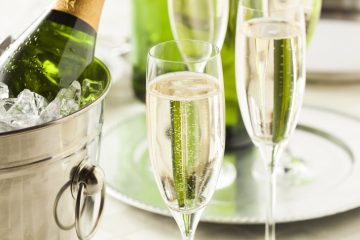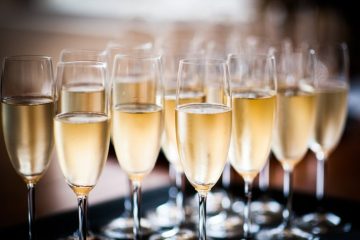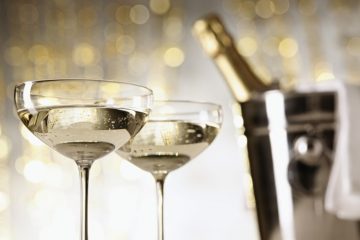Bollinger Special Cuvée is one of our favourite non-vintage Champagnes, and we’re not alone. Any Champagne fan will have tried this at least once, and it’s the go-to Champagne for many. For those of you that haven’t yet had the pleasure of tasting a bottle, or are considering upgrading from Cava, we’ve put together a handy Bollinger Special Cuvée Fact Sheet to tell you everything you need to know!
Bollinger Special Cuvée: The basics
First things first: Bollinger Special Cuvée is the non-vintage wine of Champagne Bollinger, one of the top Champagne houses in the Aÿ region. Non-vintage Champagne, you may remember, is produced by blending base wines from a number of different vintages. Producers do this in order to achieve a consistent house style from one year to the next. The climate in Champagne is lousy and vintage variation is huge, so this is generally impossible to do with the wine from one single year.
Bollinger Special Cuvée is one of the most iconic non-vintage Champagne labels, alongside other top wines like Louis Roederer Brut Premier, Moët & Chandon Brut Impérial and Veuve Clicquot Brut Yellow Label. It’s in good company! The benefit of these wines is that you get a taste of the very best Champagne houses, at a relatively affordable price.
A simple Bollinger Special Cuvée technical sheet
Keeping it simple, here’s what you need to know when it comes to the technical and production aspects of Bollinger Special Cuvée. It’s not crucial to your enjoyment, but being familiar with this stuff will help you understand and appreciate Champagne all the more!
- The blend involves the three classic Champagne grape varieties: You’ve got 60% Pinot Noir, 25% Chardonnay and 15% Pinot Meunier. More than 85% of the grapes used come from Grand Cru Champagne vineyards.
- The wine is aged in Bollinger’s cellars for at least three years, considerably longer than the minimum requirement by the official Champagne appellation.
- Bollinger Special Cuvée is a Brut Champagne, with a dosage of just 8-9 grams of residual sugar per litre. In plain English: it’s a dry Champagne with only minimal sugar!
Tasting Bollinger Special Cuvée
Though it’s not cheap, Bollinger Special Cuvée is relatively affordable, and represents great value for Champagne. If you’re not sure whether or not to trade up to Bollinger from a Prosecco or Cava, this might help. Here’s what you can expect when you pop the cork:
- Visually, there’s a brilliant gold colour, with lots of fine bubbles. It’s a very pretty Champagne.
- On the nose, it’s complex. You’ve got fruit and you’ve got spice. It develops in the glass and you’ll find sensations of apple and peach. Very enticing!
- Take a sip, and you’ll find the palate incredibly smooth and well-balanced. There’s racy bubbles and acidity, and beautiful fruit flavours giving way to toasted brioche. Incredibly refreshing.
What to eat with Bollinger Special Cuvée
Champagne is the perfect aperitif and rarely needs any food. However, it is a surprisingly versatile food wine, and Bollinger Special Cuvée is no exception. Serve it to your guests with nibbles and party food, or, if you’re feeling a little more ambitious, consider pairing it with chicken parmesan, or a herb crusted fish pie.
Sound good? Buy a bottle of Bollinger Special Cuvée here.
[cta_generico id=2597]


